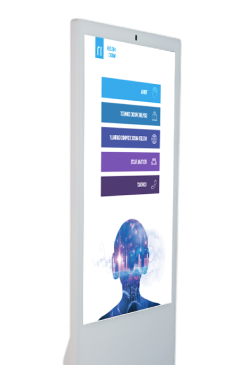

Event Solutions

Our Work

Digital Signage Software: A Guide to K-12 Schools
As schools continue to adopt digital signage software, it is important for educators to be aware of the different types of software available and the benefits they offer. This guide provides an overview of the different types of software available and how they can be used in K-12 schools.
1. What is digital signage software?
Digital signage software is used to create and manage digital signs and displays. It can be used to create messages, schedule content, and track the performance of displays.
2. What are the benefits of using digital signage software in K-12 schools?
There are many benefits of using digital signage software in K-12 schools. Some of the benefits include engaging students in learning, providing up-to-date information to parents and staff, and helping to improve school safety.
Engaging students in learning is one of the main benefits. With digital signage, such as large touchscreens or standing kiosks teachers can create dynamic and interactive learning experiences that engage students in their lessons. For example, teachers can use digital signage to create multimedia presentations, to provide students with real-time updates on their grades and assignments, and to showcase student work.
Another benefit of using digital signage software in schools is that it provides up-to-date information to parents and staff. With digital signage, school administrators can quickly and easily update messages on screens throughout the school. This can include announcements about school events, updates on school closures, and notices about changes in the school schedule.
Finally, using digital signage software can help to improve school safety. With digital signage, school administrators can quickly and easily send emergency notifications to staff and students. Digital signage can also be used to broadcast safety instructions during emergencies.
3. Where are some key places to install digital signage in schools?
As a school administrator, you know that communication is key. You also know that strategically placing digital signage around the school can completely change the way you communicate with your students and teachers.
Below are a few key places to install digital signage in schools:
Cafeteria: Menu boards are a great way to get students' attention in the cafeteria. Not only will they be able to see what's on the menu, but you can also use the boards to announce special events or alerts.
Common Areas: Common areas are perfect for displaying announcements and alerts.
Hallways: Hallways are a great place to display student achievements and event listings. By placing digital signage in hallways, you can make sure that students and teachers are always aware of upcoming events and important dates.
Classrooms: Classrooms are the perfect place for digital signage because it can assist with teaching. By placing digital signage in classrooms, you can provide teachers with a valuable resource that they can use to engage and educate their students.
Teacher's Lounges: Teacher's lounges are a great place for staff communication. By placing digital signage in these areas, you can make sure that everyone in the school is aware of important information.
School Entrances: School entrances are the perfect place for wayfinding and directory information. By placing digital signage in these areas, you can make sure that everyone in the school can easily find their way around.
4. What are some of the best digital signage software for K-12 schools?
Digital signage software is a crucial part of any digital signage ecosystem. It is the software that manages content and hardware. Below are a few must-have features for digital signage software for schools:
Content management: The software should allow you to easily manage and create content for your digital signage. This includes creating, editing, and scheduling content.
Hardware management: The software should allow you to easily manage and control your digital signage hardware. This includes adding, removing, and configuring hardware.
Reporting: The software should provide you with detailed reports on the performance of your digital signage. This includes information on impressions, engagement, and conversions.
These are just a few of the must-have features for digital signage software for schools. Make sure to look for these features when choosing software for your digital signage needs.
Digital Signage Software
Schools are quickly adopting digital signage software to improve communication between staff and students. The best digital signage software for K-12 schools should be easy to use, provide up-to-date information, and be accessible from any device.
Some of the best digital signage software for K-12 schools include:
SchoolPointe- This software is easy to use and provides up-to-date information to staff and students. It can be accessed from any device.
SchoolWise- This software is also easy to use and provides up-to-date information. It can be accessed from any device, and also has the ability to send alerts to staff and students.
ClassFlow- This software is designed for use in the classroom. It provides up-to-date information and allows teachers to share materials with students.
Overall, digital signage software offers a number of benefits for K-12 schools. It can help improve communication and engagement among students, staff, and parents, as well as improve learning outcomes. When choosing a software package, it is important to consider the specific needs of your school and find one that fits your budget and requirements.